Tag Archives: generative ai
Neural Networks Interview Questions – Quiz #45

Are you preparing for a job interview in the field of deep learning or neural networks? If so, you’re likely aware of how complex and technical these topics can be. In order to help you prepare, we’ve put together a list of common neural network interview questions and answers in form of multiple-choice quiz. The quiz in this blog post covers basic concepts related to neural network layers, perceptron, multilayer perceptron, activation functions, feedforward networks, backpropagation, and more. We’ve included 15 multiple-choice questions, as well as 5 additional questions specifically focused on the backpropagation algorithm. I will be posting many more quizzes on the neural networks in time to come, …
Google’s Free Machine Learning Courses: Learn from the Best

Machine learning has become a fundamental part of almost every industry today. With the increasing demand for data scientists and machine learning engineers, it has become imperative for professionals to keep themselves updated with the latest tools and techniques. Fortunately, Google offers a range of free machine learning courses that cater to professionals of all expertise levels. In this blog, we will explore the top Google machine learning courses that will help learners enhance their skills and stay ahead of the game. List of Free Machine Learning Courses by Google The following is a list of free machine learning courses from Google which you can take online. These courses can …
ChatGPT Prompts for Focused Learning

Have you ever felt frustrated with the limited time you have to learn and understand key concepts or topics in your desired field in a focused manner? Do you feel lost with the technical terms and jargon used in the desired field? ChatGPT’s prompts can help you overcome these obstacles and make learning more efficient and effective. By leveraging the power of natural language processing and machine learning, ChatGPT provides you with personalized learning opportunities that cater to your specific needs and learning goals. Through this blog, we will explore a list of ChatGPT prompts which can help you learn about any topics in your desired field of interest in …
Lung Disease Prediction using Machine Learning
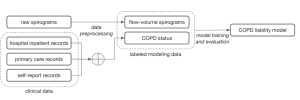
Lung diseases, including chronic obstructive pulmonary disease (COPD), are a leading cause of death worldwide. Early detection and treatment are critical for improving patient outcomes, but diagnosing lung diseases can be challenging. Machine learning (ML) models are transforming the field of pulmonology by enabling faster and more accurate prediction of lung diseases including COPD. In this blog, we’ll discuss the challenges of detecting / predicting lung diseases using machine learning, the clinical dataset used in research, supervised learning method used for building machine learning models. Challenges in Detecting Lung Diseases with Machine Learning Detecting and predicting lung diseases using machine learning can be challenging due to a lack of labeled …
KMeans Silhouette Score Python Example
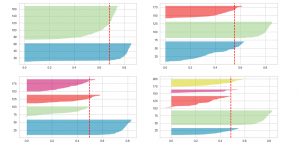
If you’re building machine learning models for solving different prediction problems, you’ve probably heard of clustering. Clustering is a popular unsupervised learning technique used to group data points with similar features into distinct clusters. One of the most widely used clustering algorithms is KMeans, which is popular due to its simplicity and efficiency. However, one major challenge in clustering is determining the optimal number of clusters that should be used to group the data points. This is where the Silhouette Score comes into play, as it helps us measure the quality of clustering and determine the optimal number of clusters. Silhouette score helps us get further clarity for the following …
ChatGPT Prompt for Job Interview Preparation

Preparing for a job interview can be a nerve-wracking experience. It’s natural to feel a sense of pressure as you try to impress your potential employer and secure the job you’ve been dreaming of. However, with the right preparation, you can increase your chances of acing the interview and landing the job. That’s where ChatGPT comes in. As a powerful language model trained by OpenAI, ChatGPT is equipped with the knowledge and expertise to provide you with valuable insights and prompts to help you prepare for your job interview. In this blog, we’ll explore some of the ways that ChatGPT can assist you in your job interview preparation. Whether you’re …
OpenAI’s Business Case Studies & Use Cases

In today’s fast-paced world, businesses are constantly searching for new and innovative ways to stay ahead of the competition and artificial intelligence (AI) is one of the key technology enabler driving innovation and bringing competitive edge. One of the most promising AI technologies in recent years has been generative AI, which has the potential to transform the way companies operate and interact with customers. Among the leading generative AI platforms available today is OpenAI, a pioneer company in the field of generative AI that is dedicated to advancing AI in a safe and beneficial way. In this blog, we will explore OpenAI’s potential case studies and related use cases for …
Why & When to use Eigenvalues & Eigenvectors?

Eigenvalues and eigenvectors are important concepts in linear algebra that have numerous applications in data science. They provide a way to analyze the structure of linear transformations and matrices, and are used extensively in many areas of machine learning, including feature extraction, dimensionality reduction, and clustering. In simple terms, eigenvalues and eigenvectors are the building blocks of linear transformations. Eigenvalues represent the scaling factor by which a vector is transformed when a linear transformation is applied, while eigenvectors represent the directions in which the transformation occurs. In this post, you will learn about why and when you need to use Eigenvalues and Eigenvectors? As a data scientist/machine learning Engineer, one must …
Amazon Bedrock to Democratize Generative AI

Amazon Web Services (AWS) has announced the launch of Amazon Bedrock and Amazon Titan foundational models (FMs), making it easier for customers to build and scale generative AI applications with foundation models. According to AWS, they received feedback from their select customers that there are a few big things standing in their way today in relation to different AI use cases. First, they need a straightforward way to find and access high-performing FMs that give outstanding results and are best-suited for their purposes. Second, customers want integration into applications to be seamless, without having to manage huge clusters of infrastructure or incur large costs. Finally, customers want it to be …
Backpropagation Algorithm in Neural Network: Examples
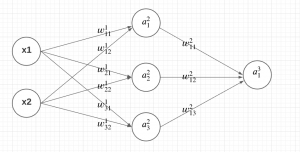
Artificial Neural Networks (ANN) are a powerful machine learning / deep learning technique inspired by the workings of the human brain. Neural networks comprise multiple interconnected nodes or neurons that process and transmit information. They are widely used in various fields such as finance, healthcare, and image processing. One of the most critical components of an ANN is the backpropagation algorithm. Backpropagation algorithm is a supervised learning technique used to adjust the weights of a Neural Network to minimize the difference between the predicted output and the actual output. In this post, you will learn about the concepts of backpropagation algorithm used in training neural network models, along with Python …
SVM RBF Kernel Parameters: Python Examples
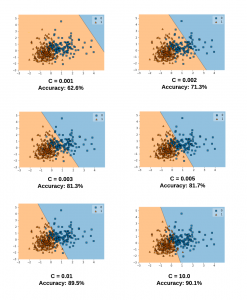
Support vector machines (SVM) are a popular and powerful machine learning technique for classification and regression tasks. SVM models are based on the concept of finding the optimal hyperplane that separates the data into different classes. One of the key features of SVMs is the ability to use different kernel functions to model non-linear relationships between the input variables and the output variable. One such kernel is the radial basis function (RBF) kernel, which is a popular choice for SVMs due to its flexibility and ability to capture complex relationships between the input and output variables. The RBF kernel has two important parameters: gamma and C (also called regularization parameter). …
Quiz #86: Large Language Models Concepts

In the ever-evolving field of data science, large language models (LLMs) have become a crucial component in natural language processing (NLP) and AI applications. As a data scientist, keeping up with the latest developments and understanding the core concepts of LLMs can give you a competitive edge, whether you’re working on cutting-edge projects or preparing for job interviews. In this quiz, we have carefully curated a set of questions that cover the essentials of large language models, including their purpose, architecture, types, applications, and more. By attempting this quiz, you’ll not only test your current knowledge but also solidify your understanding of LLM concepts. This will prove valuable when discussing …
Meta Unveils SAM and Massive SA-1B Dataset to Advance Computer Vision Research

Meta Researchers have, yesterday, unveiled a groundbreaking new model, namely Segment Anything Model (SAM), alongside an immense dataset, the Segment Anything Dataset (SA-1B), which together promise to revolutionize the field of computer vision. SAM’s unique architecture and design make it efficient and effective, while the SA-1B dataset provides a powerful resource to fuel future research and applications. The Segment Anything Model is an innovative approach to promptable segmentation that combines an image encoder, a flexible prompt encoder, and a fast mask decoder. Its design allows for real-time, interactive prompting in a web browser on a CPU, opening up new possibilities for computer vision applications. One of the key challenges SAM …
Machine Learning: Identify New Features for Disease Diagnosis
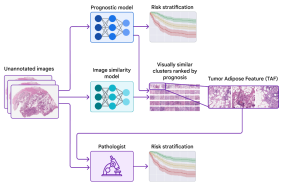
When diagnosing diseases that require X-rays and image-based scans, such as cancer, one of the most important steps is analyzing the images to determine the disease stage and to characterize the affected area. This information is central to understanding clinical prognosis and for determining the most appropriate treatment. Developing machine learning (ML) / deep learning (DL) based solutions to assist with the image analysis represents a compelling research area with many potential applications. Traditional modeling techniques have shown that deep learning models can accurately identify and classify diseases in X-rays and image-based scans and can even predict patient prognosis using known features, such as the size or shape of the …
Python – Draw Confusion Matrix using Matplotlib
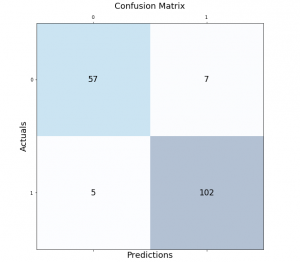
Classification models are a fundamental part of machine learning and are used extensively in various industries. Evaluating the performance of these models is critical in determining their effectiveness and identifying areas for improvement. One of the most common tools used for evaluating classification models is the confusion matrix. It provides a visual representation of the model’s performance by displaying the number of true positives, false positives, true negatives, and false negatives. In this post, we will explore how to create and visualize confusion matrices in Python using Matplotlib. We will walk through the process step-by-step and provide examples that demonstrate the use of Matplotlib in creating clear and concise confusion …
Different types of Time-series Forecasting Models
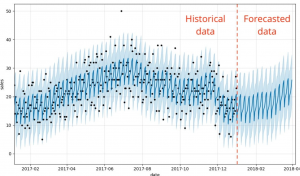
Forecasting is the process of predicting future events based on past and present data. Time-series forecasting is a type of forecasting that predicts future events based on time-stamped data points. Time-series forecasting models are an essential tool for any organization or individual who wants to make informed decisions based on future events or trends. From stock market predictions to weather forecasting, time-series models help us to understand and forecast changes over time. However, with so many different types of models available, it can be challenging to determine which one is best suited for a particular scenario. There are many different types of time-series forecasting models, each with its own strengths …
I found it very helpful. However the differences are not too understandable for me